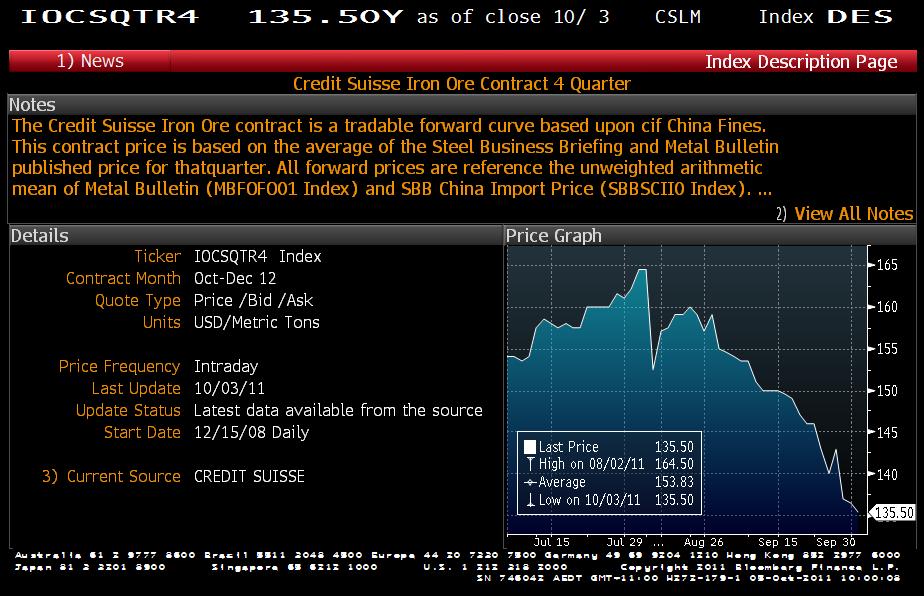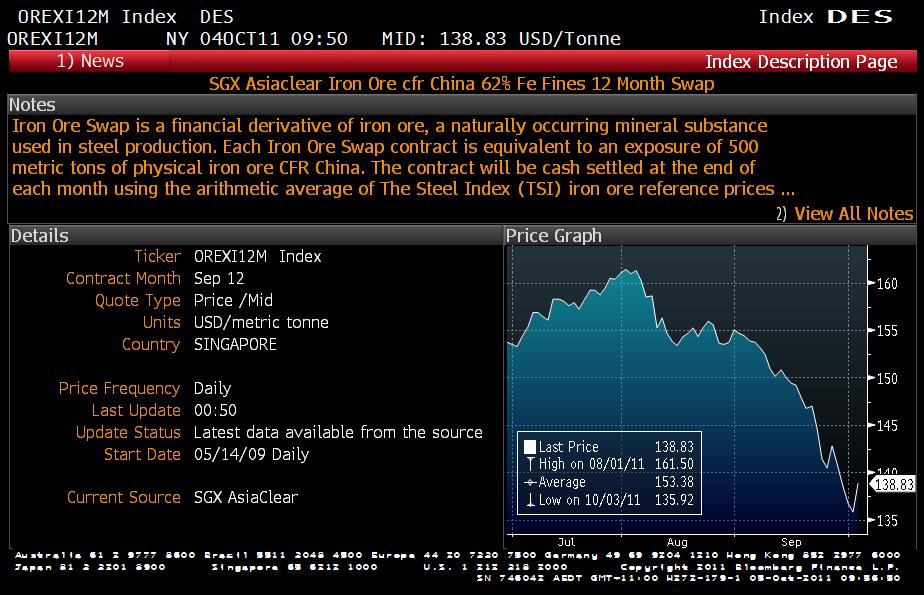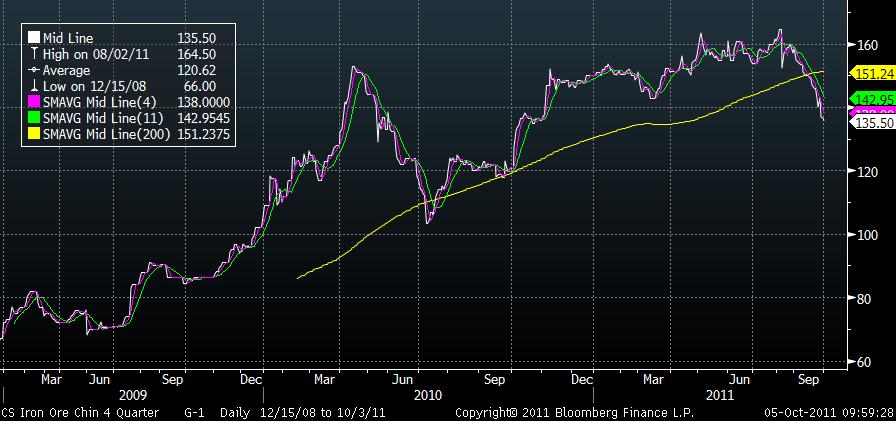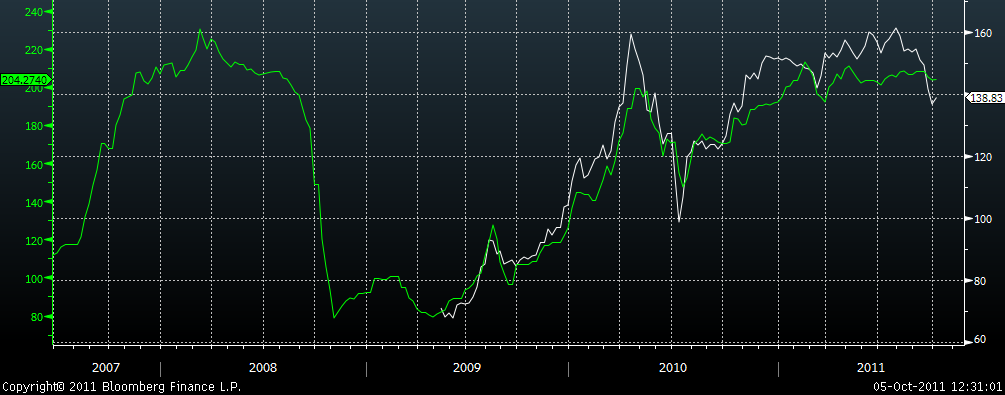Australia’s lifeline in China, John Garnaut reported this morning the worrying news that:
The Chinese steel mills that have been holding up the Australian economy are under pressure, with steel prices falling and iron ore prices expected to follow.
Robust steel demand in China led Australia to post a record $5.9 billion in iron ore exports and the second highest trade surplus in July, according to figures released yesterday.
Chinese spot prices remain stable and high, above $171 per tonne for 62 per cent iron ore, and Australian producers have mostly locked in high prices until the end of this year.
But this might be as good as it gets because steel producers are cutting prices and market sentiment is rapidly deteriorating, analysts say.
The steel and iron ore markets were bracing for ”volatility on a declining trend”, said Yin Jimei, an analyst at Iron & Steel Information Website in Tangshan.
Xu Xiangchun, at Mysteel in Shanghai, said market anxieties over the global economy had coincided with softening domestic demand including a pullback in railway construction due to a series of scandals in the Ministry of Railways.
Prices for ”rebar” construction steel fell 2.6 per cent last week and they have dropped 8 per cent since mid-August, said Paul Bartholomew at Steel Business Briefing.
In my post yesterday about the record trade data, I made similar points about the steel price and promised to return with some charts on iron ore futures and swaps. Well, here are 12 month swaps and I am not reassured:


I think it’s fair to say that that is not pretty. But let’s take a look at a longer time frame. The iron ore swaps market has only been going for two years or so, as the old annual benchmarking pricing regime declined and opened the opportunity for derivative trading:

Now, that puts the falls into perspective. But there is still cause for concern. First, there was obviously a much larger correction during 2010’s combined Greek bailout and US double dip scare. This came to an end with the commencement of QE2 in the US. Those that maintain the argument that the iron ore contract system prevented the effects of financialisation that took hold of other metals might take pause at this chart.
We can’t say for sure, however, becasue the iron ore market has also been strongly supported by oscillating problems in Indian supply owing to political interference that began at the same time.
What we can say is that the macroeconomic circumstances are now much worse than they were in mid 2010, so iron ore swaps still look overpriced on that basis (even accounting for Indian supply concerns).
This is captured nicely in the technicals of the chart which shows a nasty double top and violation of the 200 day moving average (yellow line). Both suggest considerable downside ahead.
But what’s the relationship between iron ore swaps and the spot price? Let’s take a look:

Obviously, there’s a strong correlation with the swap market absorbing more of the speculative activity than the spot price, which is good news. But it also shows just how much further swaps will have to fall if they match 2010. It seems to me entirely plausible that iron ore swaps (and spot) could plumb the 2010 pricing lows on current slowdown in the West and China. As John Garnaut tells us, steel prices in China are already falling.
A more difficult question to ask is what happens if the Western economies slide into recession (as is my base case). The chart above shows the 2008 collapse in the ore price. It was triggered when the Lehman shock froze world trade and China’s export sector hit a wall. As a result of collapsing demand, Chinese steel mills stopped buying ore, defaulted on contracts and drew down on existing supplies. Here is a chart of iron ore stocks in Chinese ports. I’ve circled the inventory draw down:

You will note that there was a huge run up in stocks that led to the record trade numbers before the crash. We have seen a similar build up recently.
Australia still has some protection against these cyclical swings in the ongoing quarterly pricing contract system. But nobody seems to know any more just how much of our iron ore is sold in this old system and how much on monthly or even shorter contracts. One must seriously question whether in the long term the trashing of the contract system won’t come back to haunt us.
As I’ve confessed before, the iron ore market has made a goose of me several times. Certainly it appears China is going along OK for now. But the iron swaps market looks ugly and is signaling significant spot falls already. I don’t think we’ll see a full blown inventory cycle unless we also see a big European shock. But that’s not so unlikely is it?

